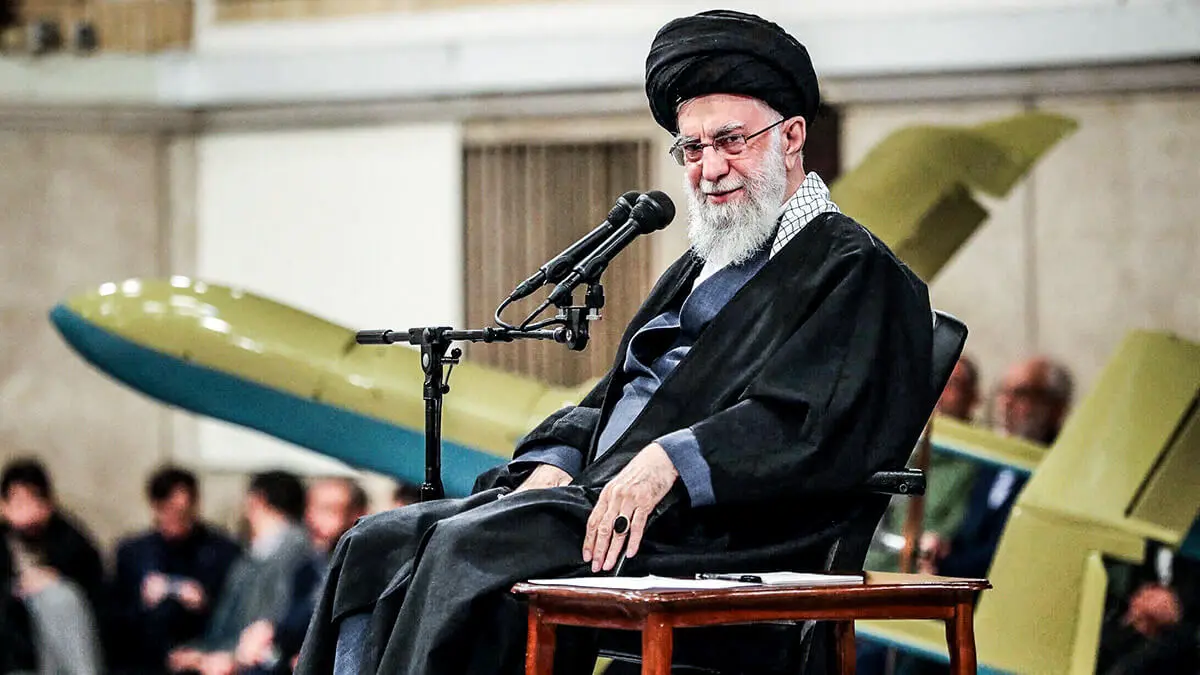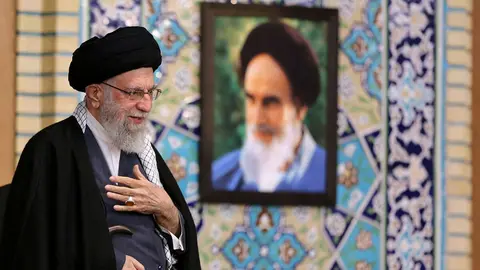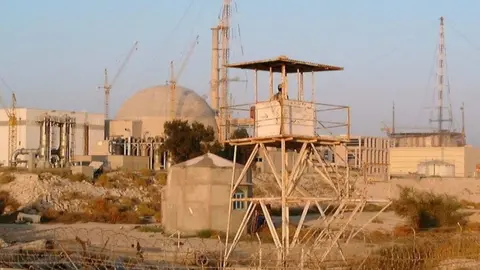Physical elimination; if impossible, demonisation

- Ayatollah Khomeini drinks the poison of ceasefire
- Khamenei's revenge against the Mujahideen
- Preparation for terrorism
At the time, in 1980, Ayatollah Khomeiny, the founder of the Islamic Republic, accused the mujahideen of having set fire to buses and farms. This was to discredit the organisation, which had broad support among the younger generation, especially girls and women, and already had a brilliant record of resistance against the shah's dictatorship.
Ayatollah Khomeini drinks the poison of ceasefire
In 1988, when the National Council of Resistance of Iran (NCRI), of which the mujahideen are the main pillar, succeeded in curbing Ayatollah Khomeini's war ambitions and forced him to "drink poison", in his own words, and accept the ceasefire resolution, Khomeini paid the price for his retreat from warmongering by massacring some thirty thousand PMOI prisoners. This war had cost the Iranian people millions of dead, wounded and maimed, with at least a million schoolchildren sent to the front and two billion dollars spent. Ayatollah Khomeini's excuse for the massacre was that the PMOI's National Liberation Army was attempting to take Tehran during the final days of the Iran-Iraq war. However, according to various accounts, including those of Amnesty International, the decision to purge the mujahideen prisoners had been taken long before the attack in the summer of 1988 and concrete steps had been put in place to carry it out.
Khamenei's revenge against the Mujahideen
Let us recall that Khamenei did everything possible to make Ebrahim Raissi* president during Hassan Rohani's second term in office. The Mujahedin, who had launched major activities in Iran during these elections under the slogan "Neither charlatan nor executioner", revealed and denounced Ebrahim Raissi as the executor of the 1988 massacre. Rohani also exploited this slogan and the activities of the Mujahideen to prevent Khamenei from removing Raissi from the ballot box. Khamenei knew that if he tried at all costs to get Raissi elected, a major revolt, like the one in 2009, awaited him. So Khamenei took revenge on the Mujahideen by attacking their camp in Iraq.
Hundreds of examples can be cited of the religious dictatorship's actions to assassinate the Mujahedin leaders abroad or massacre them. When it could not physically eliminate them, it tried to demonise its enemy in order to eliminate them from the battlefield.
Preparation for terrorism
The trial of 104 PMOI members resumed in Tehran after a break of several months. The judge, who made the session public before delivering the final verdict, said: "We warn the countries hosting the defendants in this case that harbouring these individuals is considered a crime under international anti-terrorism conventions. Countries such as France should reconsider harbouring those accused of terrorist acts and crimes against humanity, and cooperate with international organisations to extradite them to Tehran. Likewise, the Albanian people, by harbouring the accused in this case, should ask their government to extradite them to Iran".
So doesn't the Le Monde article complete the show trial in Iran, one of the aims of which is to prepare the ground for the assassination of its opponents abroad? This is exactly what happened in Spain with the failed attempt on the life of a former vice-president of the European Parliament by a criminal wanted by the French police and recruited by Tehran. His only crime was supporting the Iranian resistance.
Now, after the Mujahedin denounced the religious dictator in Tehran as responsible for the wars in the Middle East, claiming that peace could not be established without his departure, and after several thousand resistance units under his command boycotted the parliamentary elections, reducing the turnout to less than 5%, the whole world is looking for an alternative to this regime. At that time, after the announcement of major activities inside and outside the country by the National Council of Resistance, the resistance units carried out twenty thousand propaganda actions against the wall of repression in Iran, each of them punishable by death. The regime inevitably resorted to demonisation. Le Monde published four pages of articles against the Iranian Resistance.
Danielle Mitterrand, in a book published thanks to the efforts of her children and friends, clearly states that no popular resistance can achieve its goal without being insulted and slandered. Madame Mitterrand, in her turn, was accused of terrorism in the ranks of the resistance against Nazism.
This demonisation is nothing new for the Iranian people. Today, every newspaper in Iran is forced to publish a great deal of distorted information about the mujahedin on a daily basis. Despite all the demonisation campaigns that have been going on for forty years, and particularly since the 1988 massacre, this organisation has managed to organise several thousand resistance units on Iranian soil, under the rule of a ruthless dictatorship.
Whom should we believe: the Iranian people's judgement of this organisation, or what the regime's propaganda loudspeakers abroad say against the Resistance?
*The president disappeared on 19 May in a helicopter incident.
*President of the Iranian regime (2013-2021)



